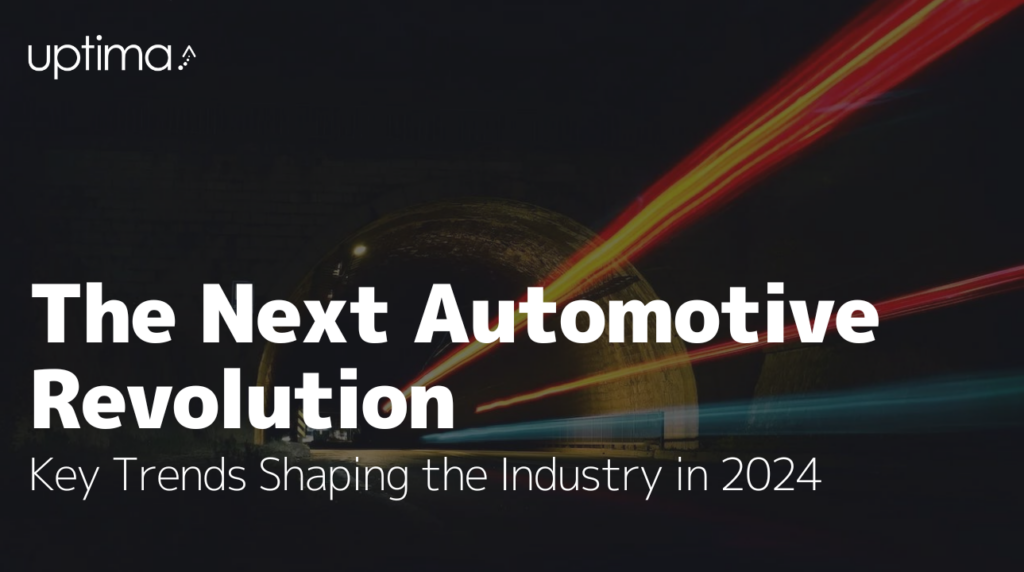
For more than a century, the automotive industry has been synonymous with innovation and evolution. From the first Model T rolling off the assembly line to the advent of autonomous vehicles, this sector continually reshapes our understanding of mobility.
Today, we stand on the cusp of another monumental shift. As consumer expectations evolve and operational complexities mount, automotive and mobility companies are recognizing the imperative for a paradigm change. The industry is moving away from traditional, disconnected systems towards a future defined by integrated, technology-driven solutions. This transformation is not just a progression but a fundamental reimagining of how automotive businesses operate and interact with their customers.
Executives in the automotive sector face several challenges, including manual and complex service models, disconnected views among stakeholders, and cumbersome operational processes. These issues, if unaddressed, pose the risk of losing competitive advantage and market share. A solution to these challenges lies in the adoption of integrated technology platforms. Platforms that offer a comprehensive view of customers and business operations, facilitating superior decision-making and operational efficiency.
Omnichannel Retail
Omnichannel retail is transforming the automotive retail experience by integrating multiple consumer touchpoints, including physical stores, online platforms, mobile apps, and social media. This strategy promises to deliver a consistent, convenient, and personalized customer journey across all channels, moving beyond transactional interactions to create a smooth, seamless car-buying experience.
Customer Lifetime Value (CLV)
Calculated by multiplying Average Transaction Cost x Annual Purchase Frequency x Expected Years of Retention, CLV is a key indicator of the total revenue a customer may generate over their relationship with a brand. It guides dealers in revenue forecasting and strategy development, emphasizing the cost-effectiveness of customer retention over acquisition. Loyalty programs play a crucial role in enhancing CLV by incentivizing repeat business and improving customer loyalty. For OEMs, CLV provides insights for optimizing revenue and marketing strategies, balancing customer acquisition and retention costs.
CRM & DMS Connectivity
Integrating CRM and DMS in the automotive sector unifies customer data with dealership operations, delivering a 360-degree customer view, efficient lead and inventory management, data accuracy, automated processes, and an improved customer experience. Such integration is essential for operational efficiency, data-driven decision-making, and gaining a competitive edge.
Connected Vehicles
Connected cars are vehicles equipped with advanced technologies that allow internet connectivity, interaction with other vehicles, and connection to various devices and services. These vehicles feature digital connectivity capabilities that enhance safety, convenience, and the driving experience.
Key features include Connected Customer 360 for a comprehensive customer view, telematics and predictive analytics for maintenance, a complete 360-degree vehicle view, a network connecting dealers and vehicles, and integration of IoT and connected devices for extended functionality.
Artificial Intelligence (AI)
AI in the automotive industry utilizes computer systems, algorithms, and machine learning to enhance vehicles, improve safety, and optimize manufacturing. It includes generative and predictive AI applications, and automation use cases. AI is already integrated into autonomous driving and Advanced Driver Assistance Systems (ADAS), with further applications being explored in inventory management, service case management, warranty handling, and customer communications.
These trends indicate a shift towards a more customer-centric, data-driven approach, essential for staying competitive in a rapidly evolving market.
One of the most notable trends in the automotive industry is the move toward holistically integrated and highly efficient service models. This transition is characterized by the adoption of intelligent systems designed to automate processes and provide actionable insights. For example, AI-recommended selling strategies are being used to optimize margins, while real-time interactive pricing engines are streamlining sales processes. These innovations represent the departure from manual, siloed systems, paving the way for more cohesive and streamlined operations.
Utilizing a single, integrated platform offers unprecedented benefits for the automotive industry. This approach delivers a 360-degree view of all business aspects, enabling actionable insights and automating manual processes. The result is an enhanced customer experience, improved collaboration within the organization, and a significant reduction in errors and re-work. The end result? Significant cost savings and revenue increases.
As the automotive industry continues to move forward in 2024, embracing these changes will be crucial for automotive companies looking to maintain a competitive edge and meet the ever-changing demands of consumers.
Uptima is at the forefront of this change, offering solutions that simplify business processes and enhance operational efficiency.
As we continue to see the evolution of the automotive ecosystem, Uptima is here to dissect key challenges and propose actionable strategies to empower businesses. By leveraging the power of technology, our goal is to not only overcome hurdles but to pave the way for a redefined and future-ready automotive industry for years to come.
To learn more about Uptima’s automotive solutions, click here.